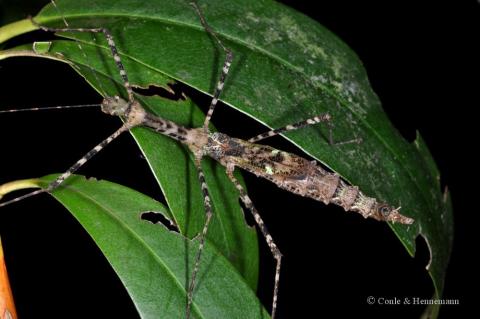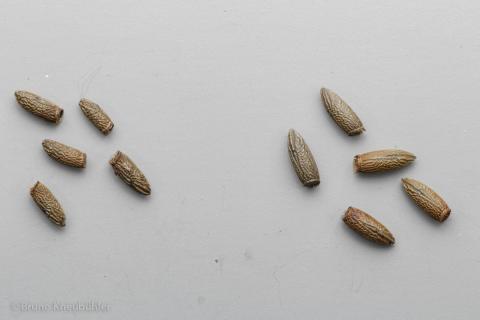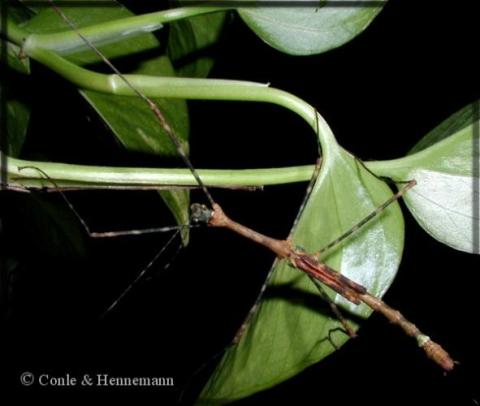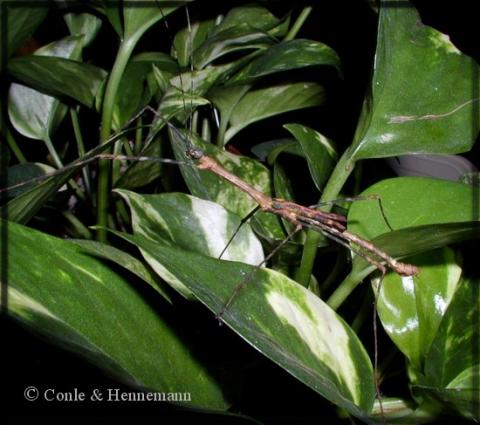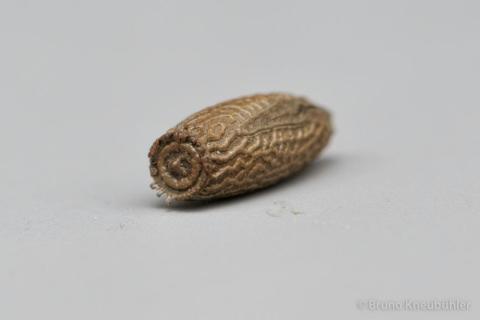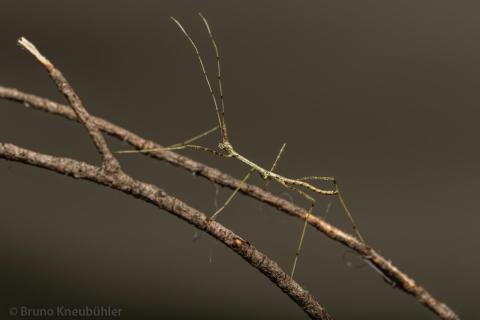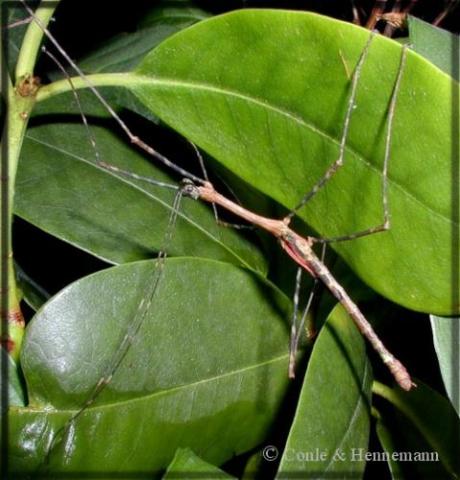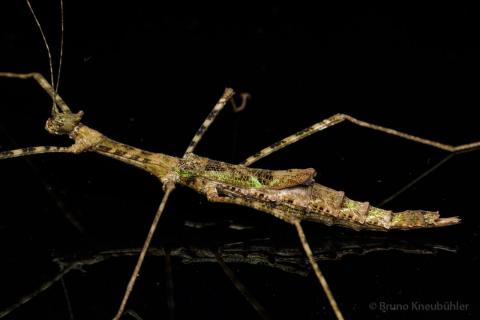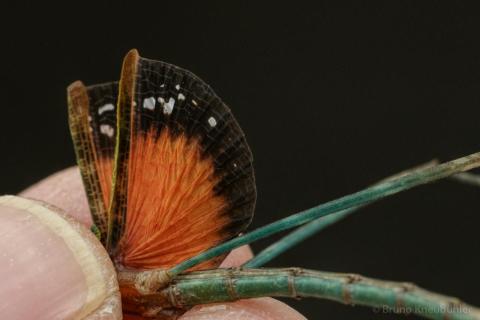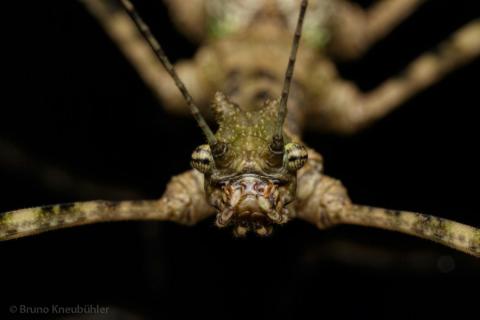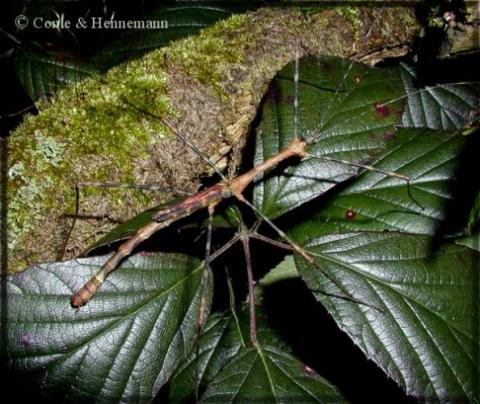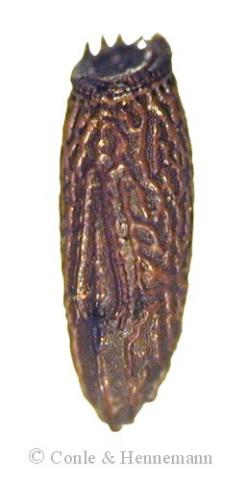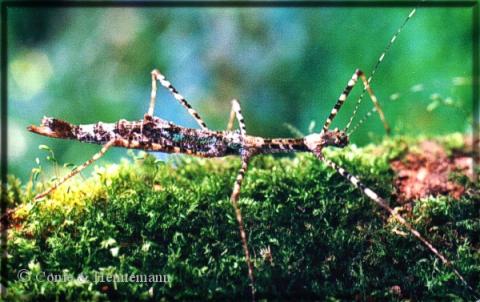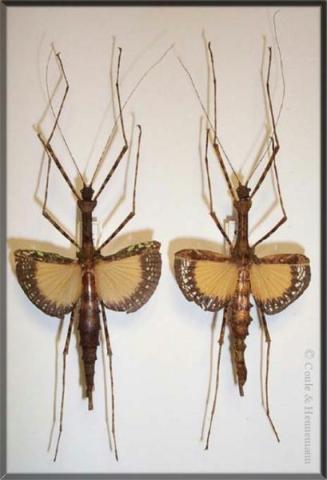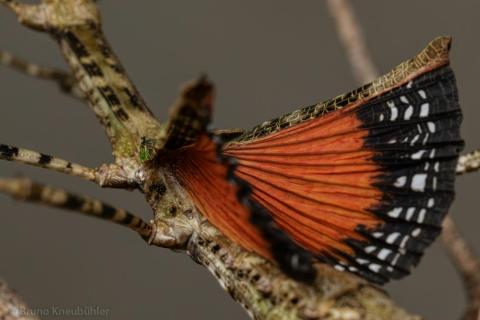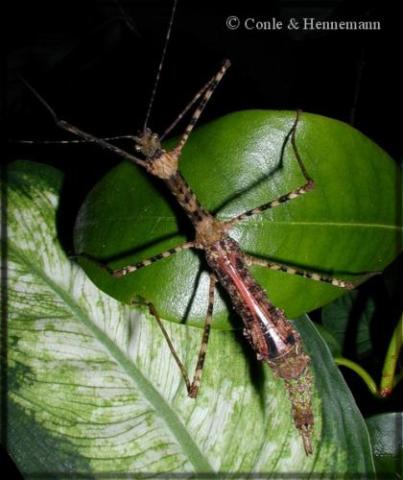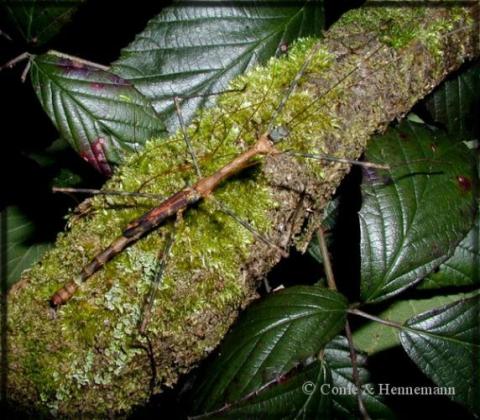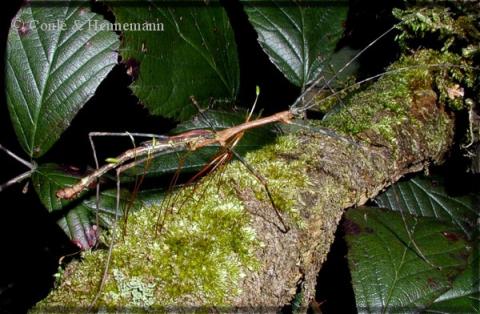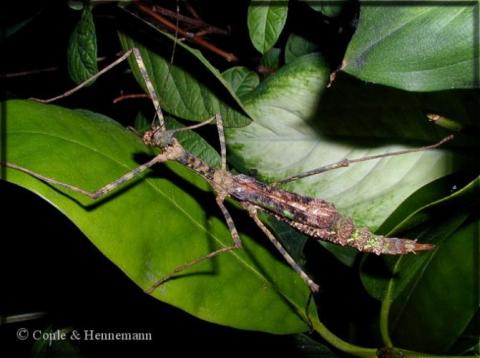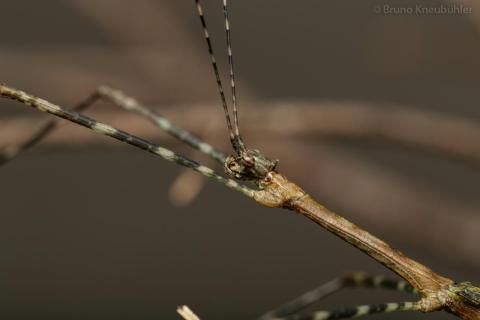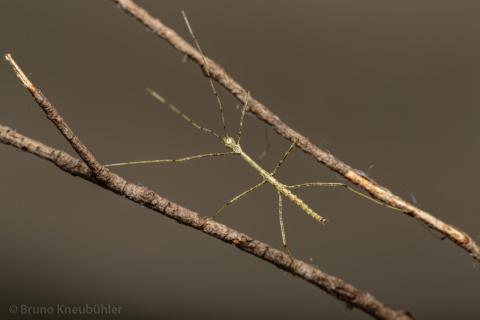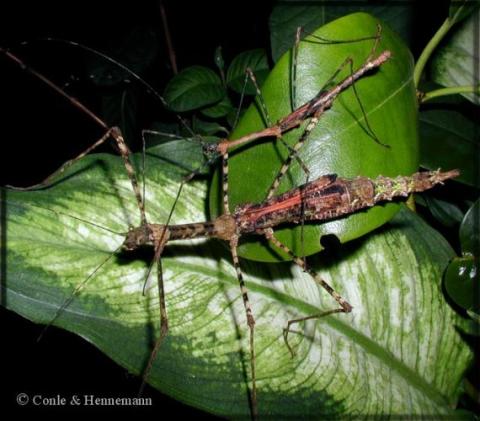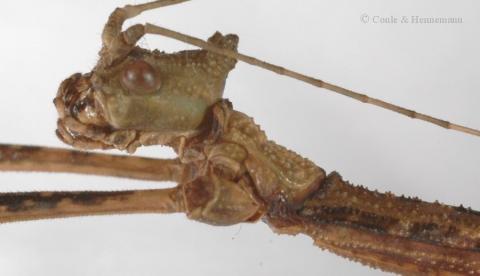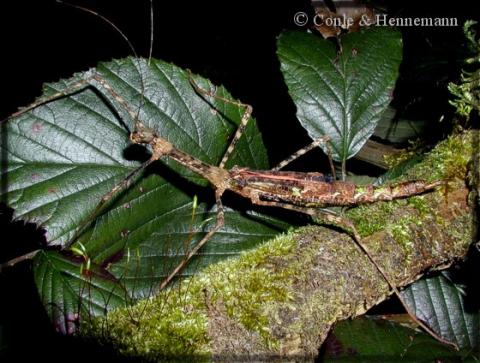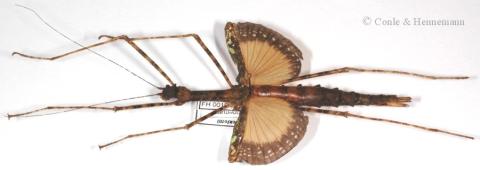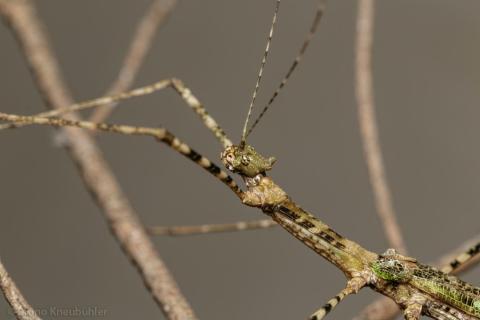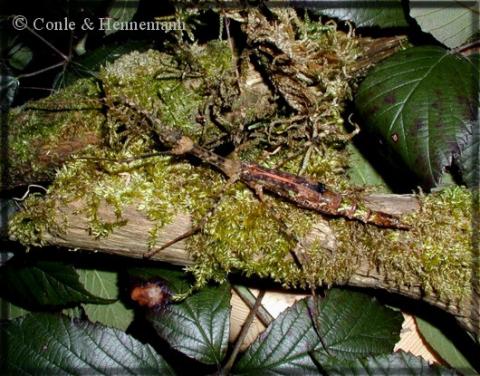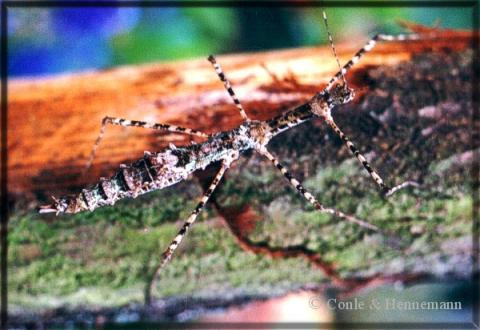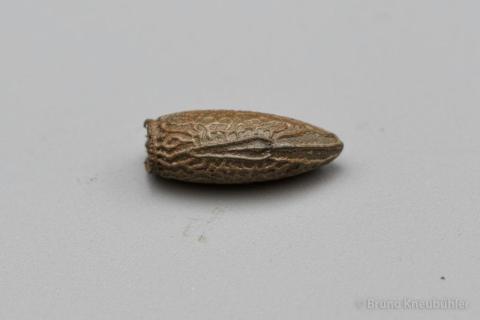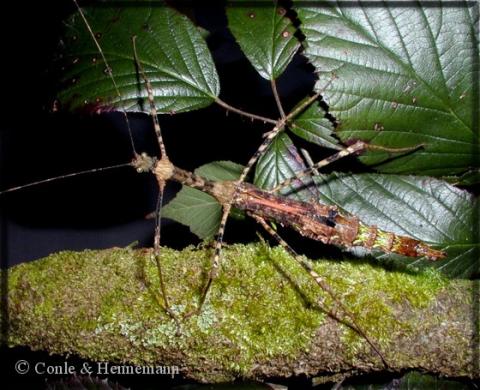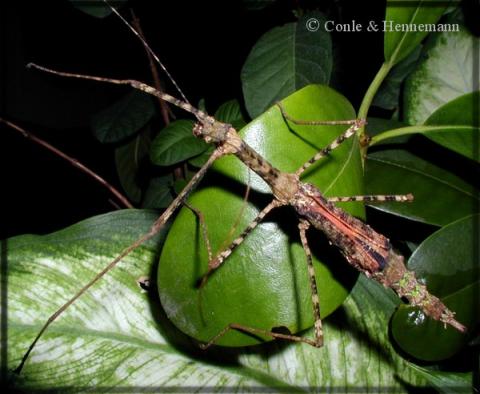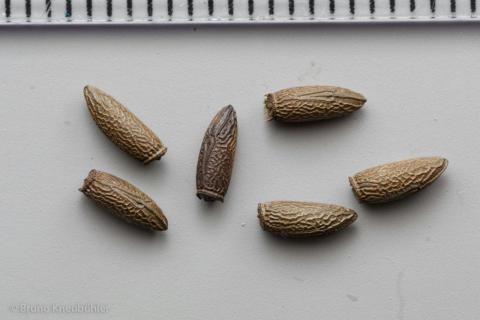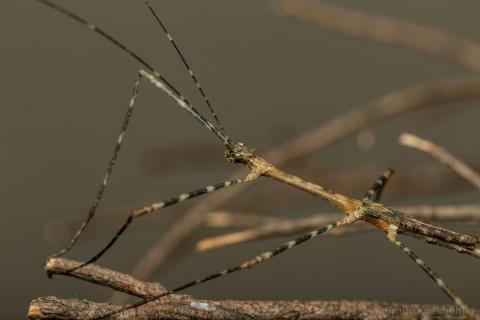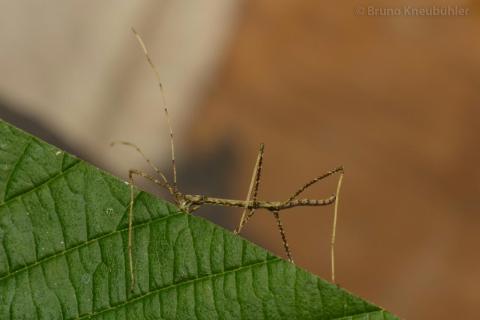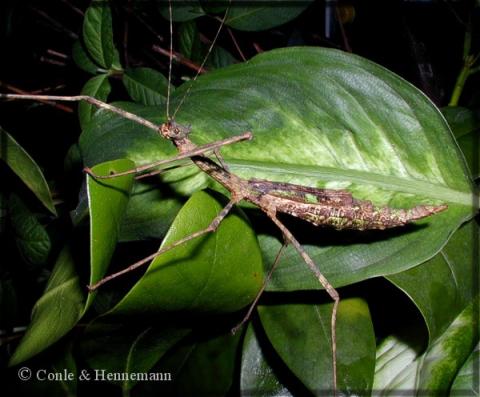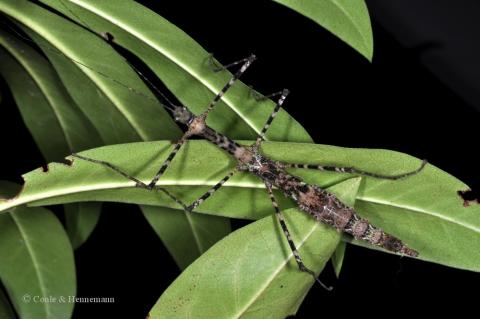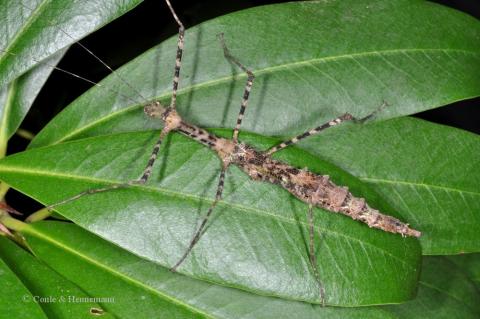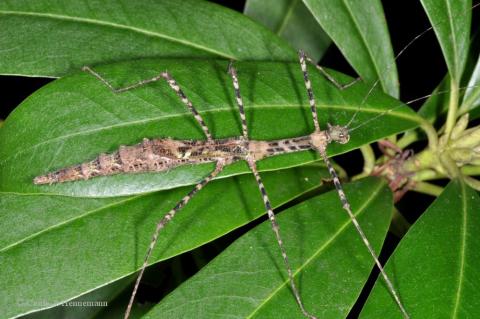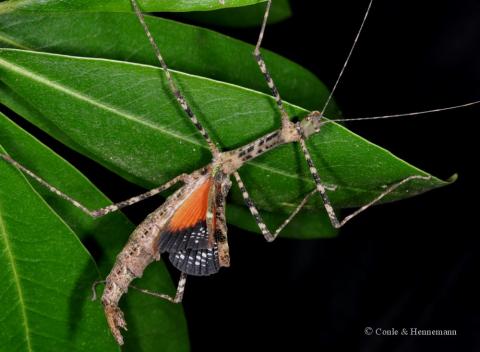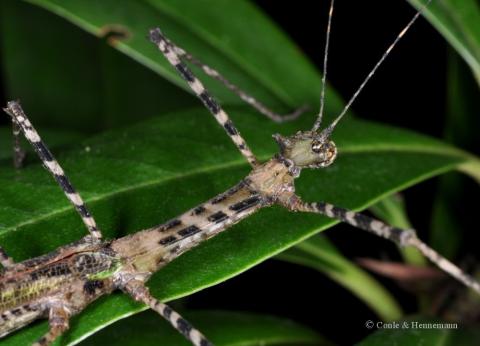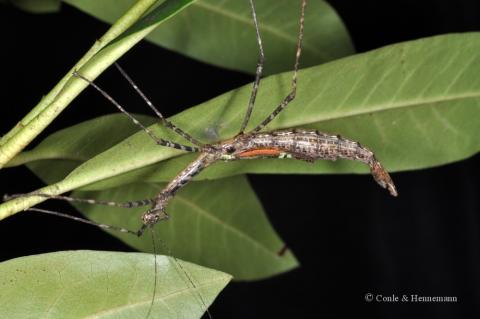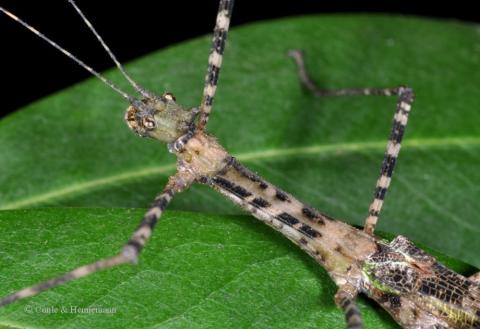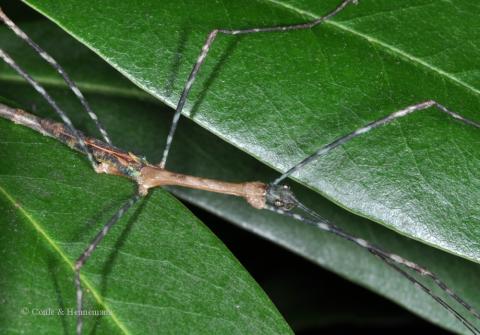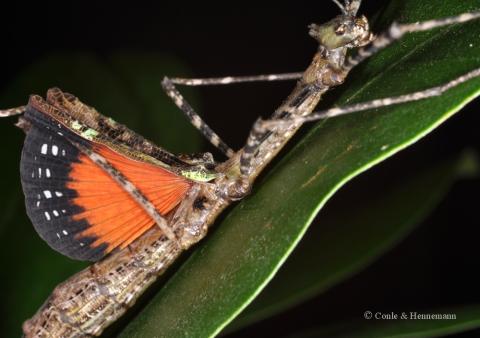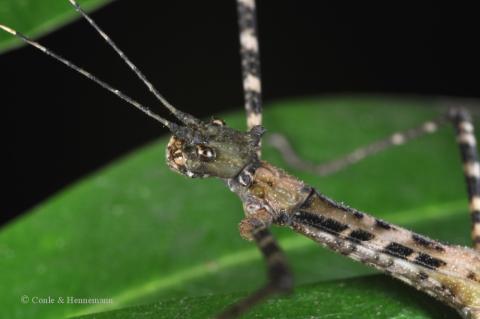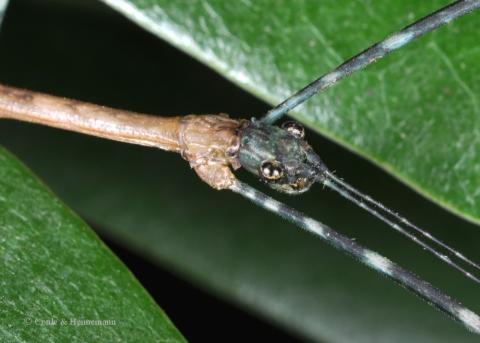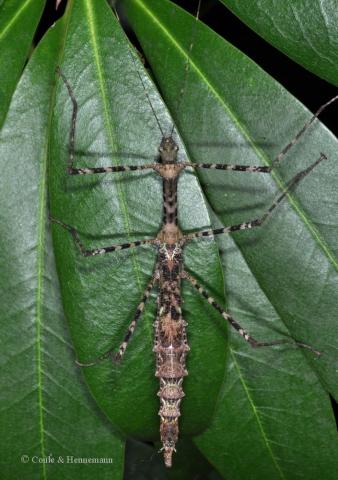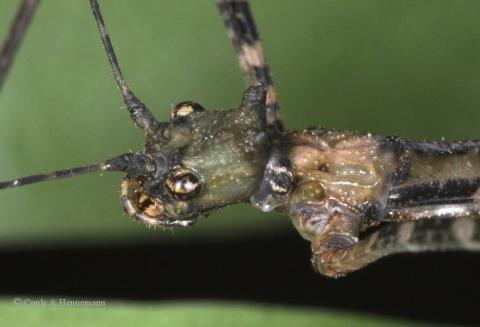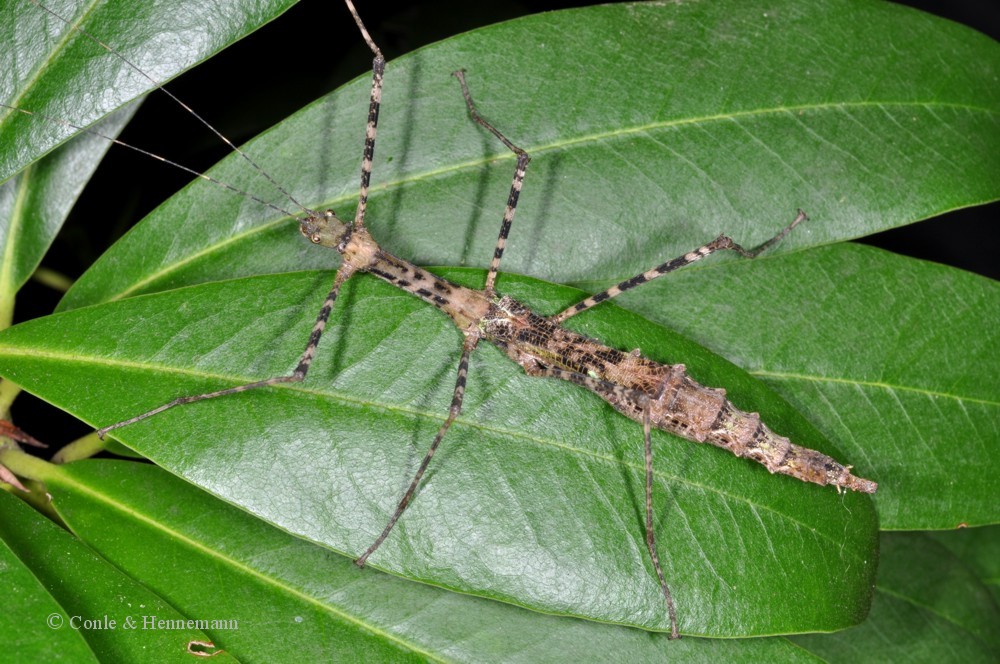
Genus
Species
Stock
CLP
34
PSG
2
Culture status
Unknown
Foodplants
Hazel (Corylus avellana)
Rhododendron sp.
Bramble (Rubus spp.)
Breeding notes
(by Bruno Kneubuehler)
General Informations
- provenience: Java
- first culture has been imported by a zoo in London in 1946
- the exact origin of this old culture is not known
- further taxonomical informations ➤ Phasmida Species Files
- this is a pure culture, and serious breeders are requested to avoid mixing this culture with similar populations from a different provenience. When spreading this culture to other breeders, then always use the full name with provenience
- this culture has the number CLP 34 (Online Phasma Culture List)
Females
- sturdy, medium-sized, long-legged
- body length ≈ 6.5 - 7.5 cm
- bark-like, contrasty coloration
Males
- slender, long-legged
- body length ≈ 5 cm
- coloration similar to females, but less contrasty
Nymphs
- freshly hatched nymphs are mottled brown
- on how to distinguish between male and female nymphs
Eggs
- ≈ 5 x 3 mm
- brown
- some females lay distinctly smaller eggs, such small eggs must be elimitated from the breeding process (see photo right)
Food Plants
- hazelnut (Corylus avellana)
well accepted by nymphs and adults - Rhododendron (different species))
well accepted by nymphs and adults - bramble (Rubus spp.)
accepted only very reluctantly
Breeding, Behaviour
- very easy to breed
- active mainly during the night
- nymphs and especially adults can be very frantically when being touched
- adults can flash their red-black wings when feeling threatened - females more often than males
- they relase a very distinctiv yet pleasant odor when feeling threatend
- females stick their eggs into a substratum. In nature this might be moss layers or soil, in captivity they accept sand or filter wool (which is used in fishkeeping)
- about 5 eggs per female and week
- incubation (Cup-Incubation-method, on medium damp vermiculite) about 5 - 6 months at 20 - 24 °C
- it is quite common that some nymphs will hatch weeks or even months after the first nymphs - from the very same batch of eggs
- eggs can be covered with vermiculite (about 10 mm high), which makes it easier for the nymphs to hatch without getting stuck in the eggs shell
- eggs of this species are not prone to get mouldy
- nymphs hatch during the night
- a humidity of about 70 - 85 % rH seems to be good enough for nymphs and adults
- one can spray them regularly with chlorine-free water, but allow the water to dry up before spraying again
- small nymphs can be kept in a Faunabox (or a similar cage), which shall not be too small
- provide a cage of about 30 x 30 x 30 (cm, L x B x H) for 2 adult couples
- males will be adult after 4 months (at 20 - 24°C), females after 5 months
